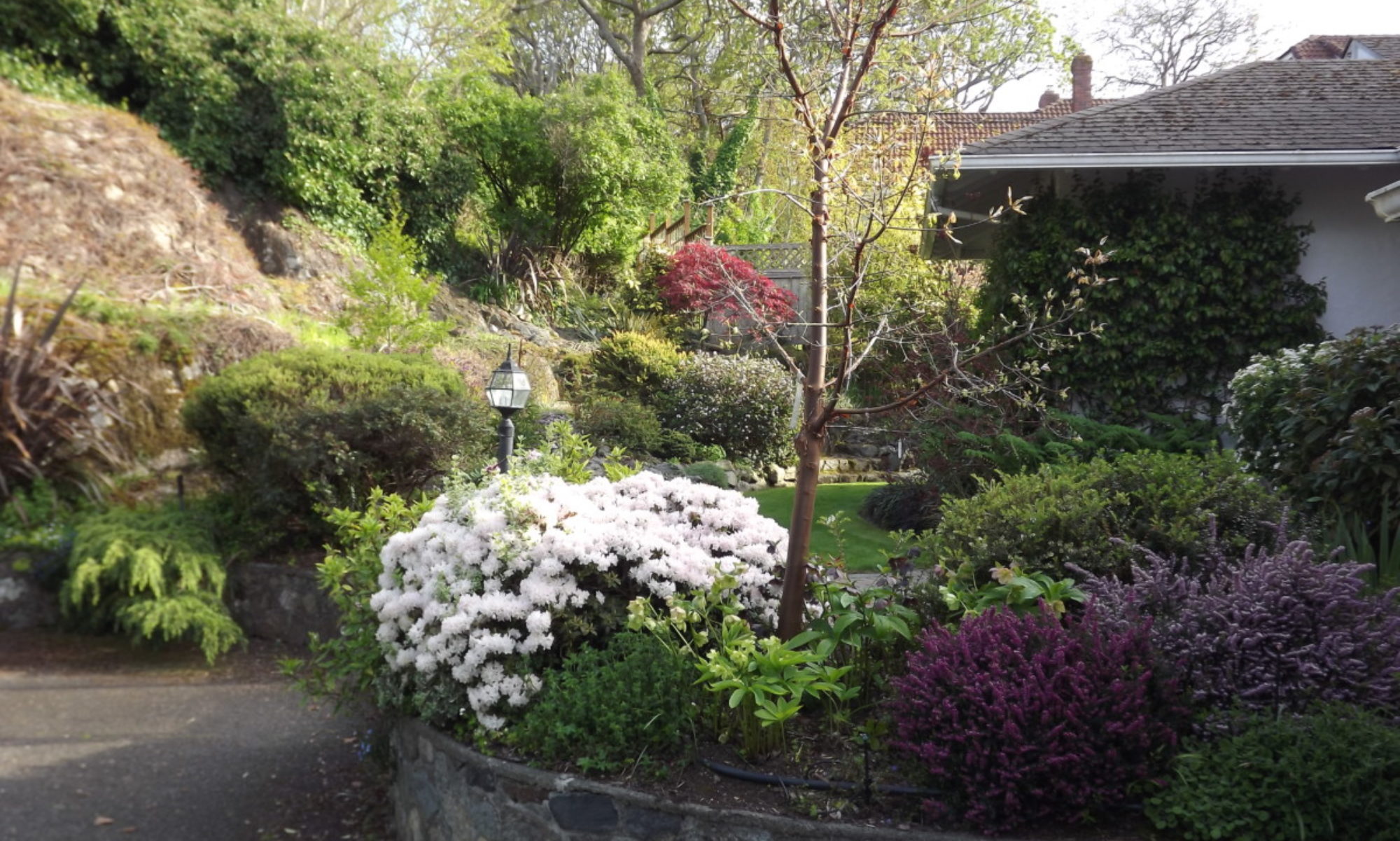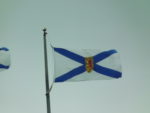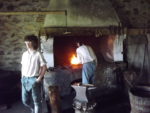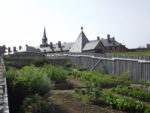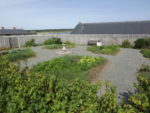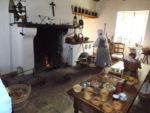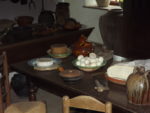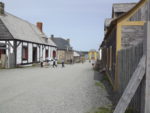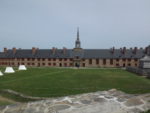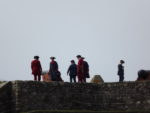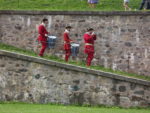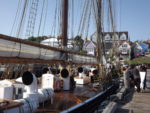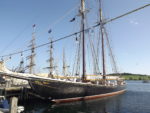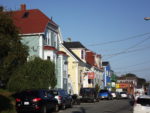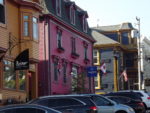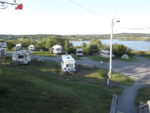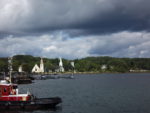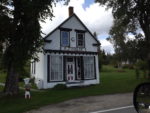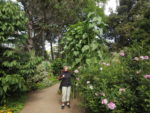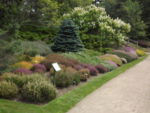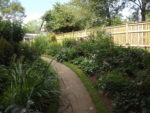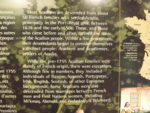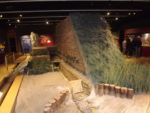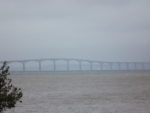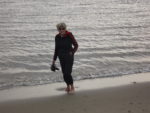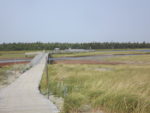Our ferry crossing from Port aux Basques to North Sydney could not have been under better conditions. Since we arrived in Nova Scotia the weather has been usable rather than stellar with one night when they warned of a danger of frost and some days with several showers. So far the major rainfalls have been at night. Having been here before, we decided that we’d try and stick to our “less is more” philosophy not to do too much. We spent a whole day at the Parks Canada (PC) Fort Louisbourg Historic Site. Again, we’d been here before, but still found it fascinating on a second visit. The fort has been painstakingly restored to what it was thought to have been in 1744, when it was the principal French garrison town in the area. PC staff the site with actors who play the parts of various characters who might have lived there in 1744 and who interpret the history through their eyes. It really feels quite authentic (except that all the characters are fluently bilingual!) and is carried through to the extent that the public dining room only uses pewter dishes and cutlery and the menu is to period.
We spent a day driving to the western end of NS to Lunenburg which is a UNESCO World Heritage town and seems to be doing everything right. There were Heritage homes, beautifully maintained, a good mix of interesting shops and a variety of restaurants catering for all tastes. We spent the next day exploring the area along the meandering coast roads through numerous villages.
We had hoped to visit Digby on the Bay of Fundy and feast on scallops, but were thwarted by the fact that several thousand bikers had descended in the town for a Labour Day weekend rally. Many roads were blocked off to allow the bikers to roar round the downtown core. In Annapolis Royal we visited the Historic Garden that had been created by the municipality as an attraction to draw tourists. It was very well done, with the plantings being of plants grown in various time periods. It was very well maintained (with a staff of 12, plus volunteers!) and had been the Canadian Garden of the Year in 2015. We then drove the length of the Annapolis Valley along the Evangeline Trail – you’ll have to read Longfellow’s long poem to discover the tragic story of Evangeline! The Valley is the area where most of NS’s agriculture and wine industry is concentrated. We stopped in Grand Prè which was the centre of the Acadian culture in the early 18th Century. In another excellent PC site we learned that the Acadians were settlers, mostly of French descent, who had settled in large parts of NS (then known as Acadia ) and in places such as Grand Prè had reclaimed a lot of the salt water marshes and turned them into productive farms. They thought of themselves as Acadians rather than French or British and tried hard to remain neutral in the various skirmishes and wars between the French and the British. When the British controlled the area in the mid 18th century, they didn’t trust the French speaking Acadians and, in 1755, made a mass deportation of the Acadians, burning their villages so they would not return. They scattered far and wide, perhaps the best known surviving area being in Louisiana. While in the area we also visited the Domaine de Grand Prè winery which produces Nova Scotia grape wines. Some of the whites in particular were very good.
On to New Brunswick where we followed the Acadian coast Scenic Drive up the east coast of the province. Again this was very largely French-speaking area of Acadian descendants. The road wound along the coast through many villages and afforded many views of the sea and the salt marshes. We saw, but did not cross the Confederation Bridge to PEI, having visited there about 20 years ago. This is the only province we won’t visit on this cross-country journey.
Our take on these Maritime provinces is the sense of history, of communities which date back hundreds of years with churchyards and cemeteries in every community to prove that. We are amazed at how very different Nova Scotia and NewBrunswick are as the latter is Canada’s only bilingual province and French is the first choice. The houses look totally different too with NB favouring ranch style while Nova Scotia has two storey, what we would call Arts and Craft style. Last time we visited (and mainly toured Cape Breton) we we were aware of the Scottish roots, music and the fact there are more Gaelic speakers than in Scotland. This time we have followed the Acadian Heritage trail in both provinces and have been amazed at a people who only colonized the area for about a hundred years, were deported in 1755 and their communities were scattered throughout the world, have managed to forge such a vibrant and lasting culture. Their descendants travel back to discover their roots.
